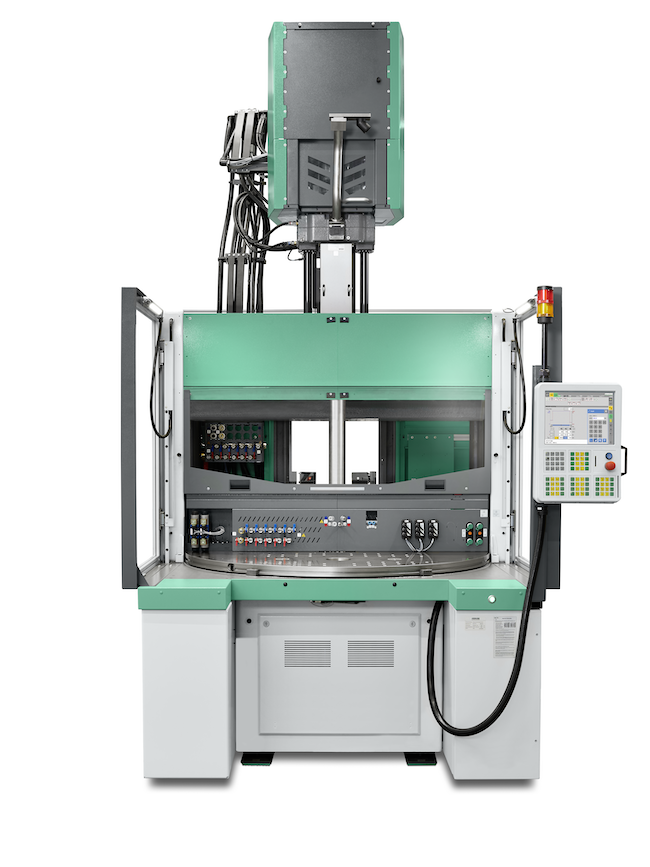Arburg at Chinaplas: Automated Rotary-Table Press Molds Parts for Mobility Sector
The turnkey system on display includes extensive automation from a local Chinese OEM combined with the German press, also customized locally.
April 5, 2024

A combination of a rotary table injection molding machine and automated parts handling will be operating at the Arburg stand at Chinaplas. The turnkey system will be molding complex fluid distributors for an automotive application made from 35% glass-fiber-reinforced polybutylene terephthalate (PBT), each containing three different metal inserts. The production cell is based on the 200-tonne Allrounder 1600 T with an integrated upstream stamping unit and conveyor system. Parts handling is performed by a six-axis robotic system.

At Chinaplas 2024, a turnkey system based around an Allrounder 1600 T rotary-table machine will produce complex automotive components. Image courtesy of Arburg.
Pillar-free design
Allrounder T vertical injection molding machines from Arburg reportedly are ideal for molding challenging parts. The servo-electric, three-station 1,600-mm-diameter rotary table can perform various rotary sequences. The pillar-free design opens up space for molds and media connections.
A four-cavity mold from Concraft produces four finished parts in a cycle time of around 60 seconds. The shot weight is 74.5 grams.
Automation with dual robots
The automation system delivers three different types of inserts into a tray via a three-axis micro-robot. Then, a six-axis robot with Concraft grippers and a load of 10 kg picks up a total of 12 inserts from this tray, and places them in the four cavities of the mold. After each injection cycle, the robot removes both the sprue and the finished parts.
The turnkey system has been customized with a stamping unit and stamping line conveyor system, also from local partner Concraft. There, the inserts are first stamped out and the pins are separated before they are placed in the mold and overmolded.
Simultaneous operations reduce cycle times
The electric drive and precision positioning system ensure high accuracy of the overall cell and, thus, reliably protect the mold from damage and wear. Simultaneous insertion, overmolding, and removal ensure short cycles.
A large selection of options is available to facilitate flexible configurations, and safety features reportedly exceed the CE standard. Precision is a key attribute of the system, supported by a pressure accumulator and the Selogica control system, which also simplifies setup and operation, according to Arburg. Medical and mobility applications, in particular, will benefit.
Implementation of the Kuka six-axis robot and the total system sequence was handled in the Arburg Technology Factory (ATF) in Pinghu, China.
Arburg is exhibiting at stand D 42 in hall 4.1.
About the Author(s)
You May Also Like




